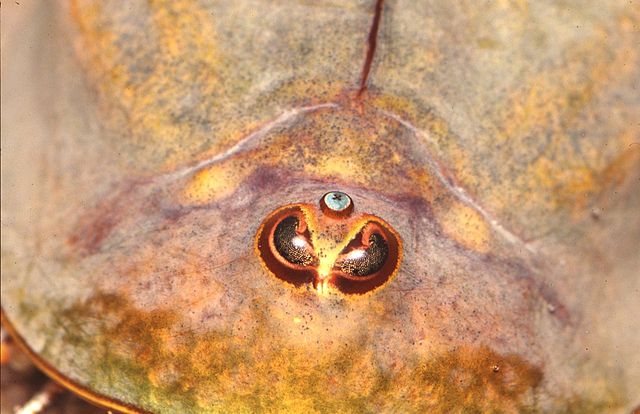Triops is a genus of small crustaceans in the order Notostraca. The long-lasting resting eggs of several species of Triops are commonly sold in kits as pets. The animals hatch upon contact with fresh water. Most adult-stage Triops have a life expectancy of up to 90 days and can tolerate a pH range of 6 to 10. In nature, they often inhabit temporary pools.
Triops
Closeup of adult Triops showing naupliar ocellus
Upper and underside Triops. 1 eyes, 2 antennae, 3 tail, 4 torso, 5 antenne, 6 1st torso appendix, 7 legs with gill, 8 middelline, 9 tail, 10 anus
Triops cancriformis "Beni-Kabuto Ebi Albino" showing translucent carapace. As the animal grows the carapace will become more opaque but will never take on the color pattern normally associated with T. cancriformis
The order Notostraca, containing the single family Triopsidae, is a group of crustaceans known as tadpole shrimp or shield shrimp. The two genera, Triops and Lepidurus, are considered living fossils, with similar forms having existed since the end of the Devonian, around 360 million years ago. They have a broad, flat carapace, which conceals the head and bears a single pair of compound eyes. The abdomen is long, appears to be segmented and bears numerous pairs of flattened legs. The telson is flanked by a pair of long, thin caudal rami. Phenotypic plasticity within taxa makes species-level identification difficult, and is further compounded by variation in the mode of reproduction. Notostracans are omnivores living on the bottom of temporary pools and shallow lakes.
Image: Triops australiensis
Image: Lepidurus Apus
The ventral side of Triops australiensis, showing the many pairs of phyllopodous legs
A collection of lake sediment containing the pink eggs of Triops longicaudatus








